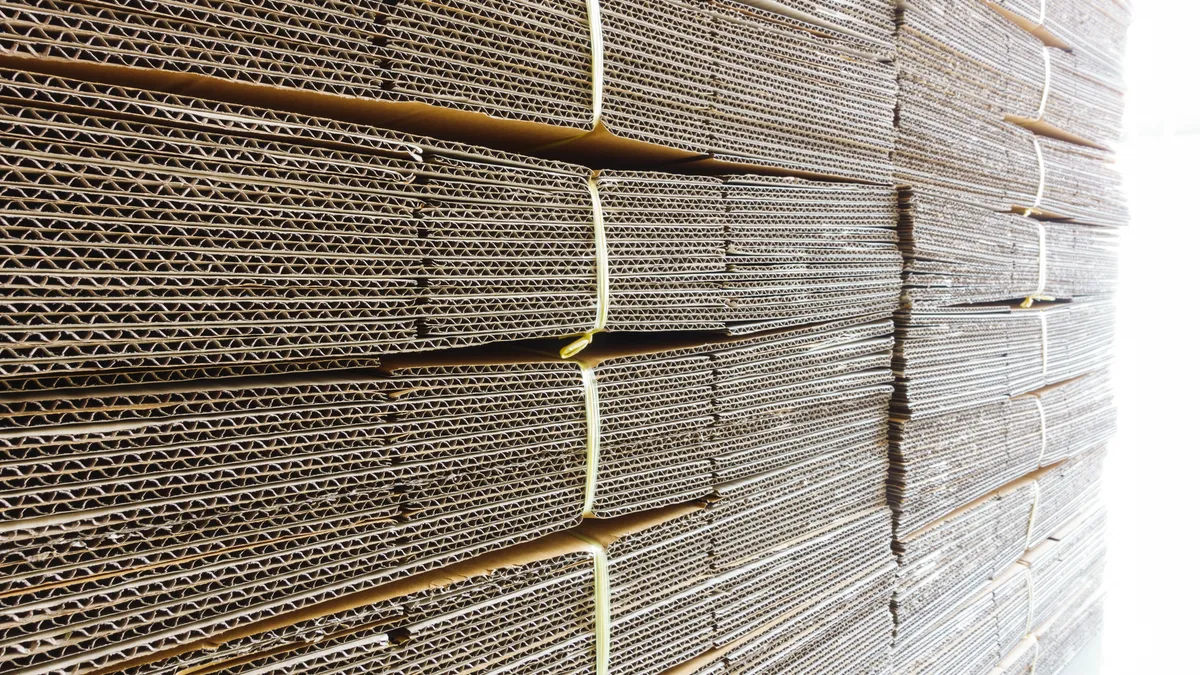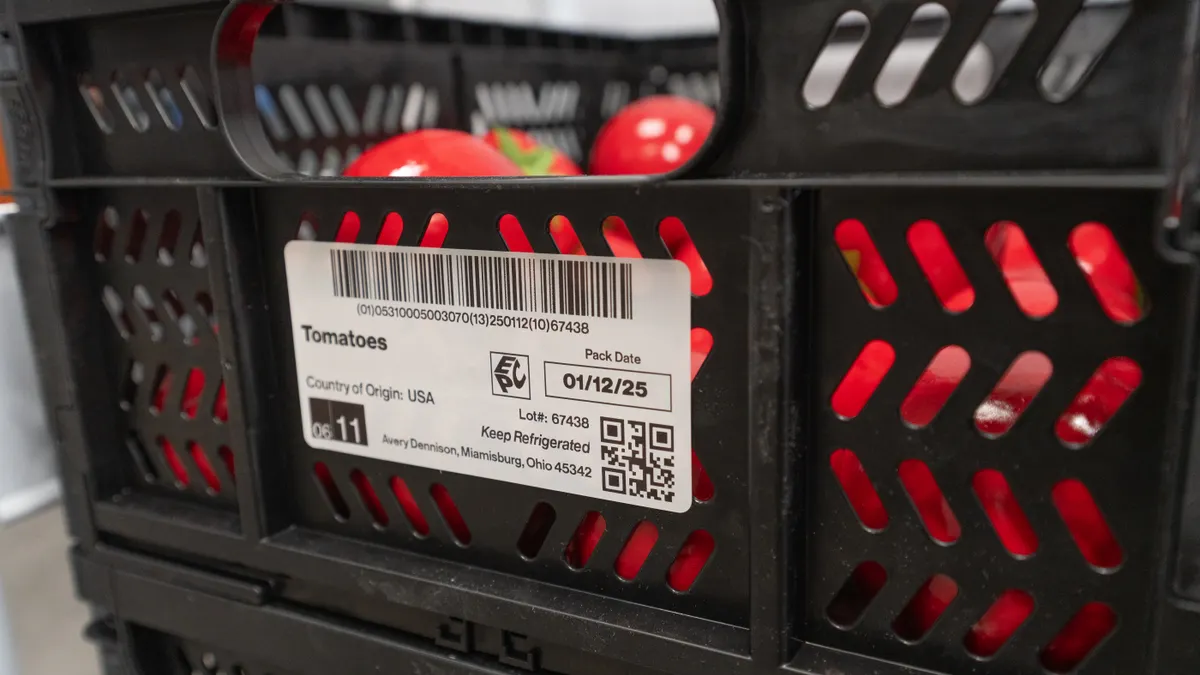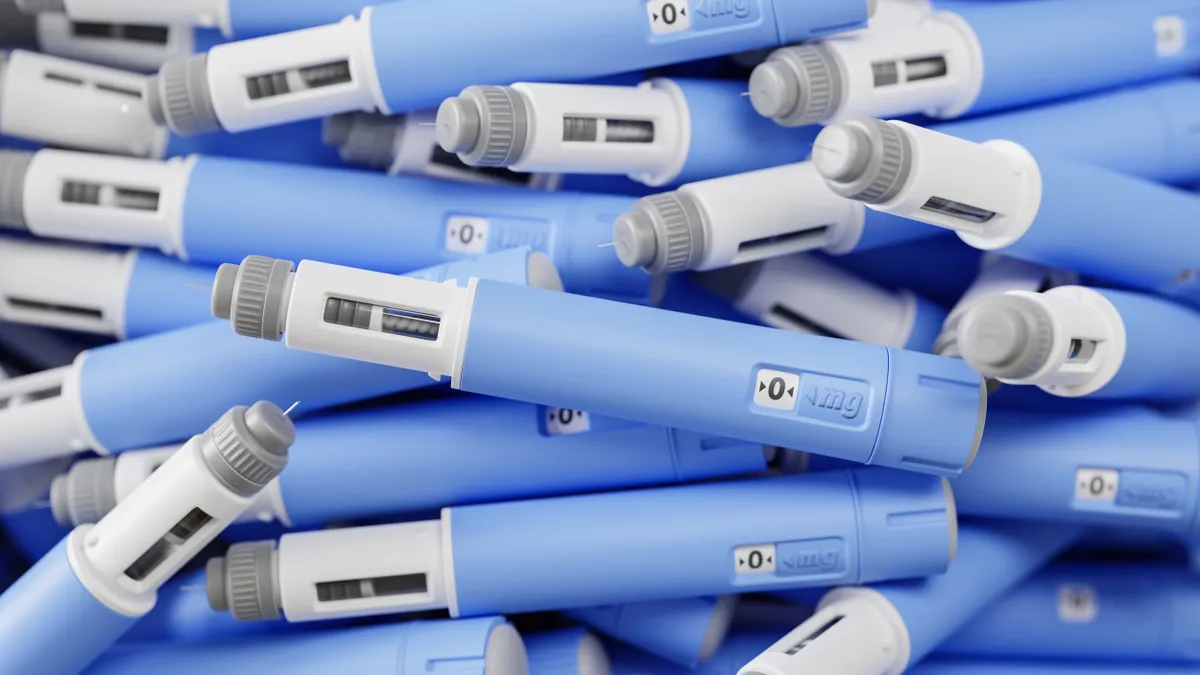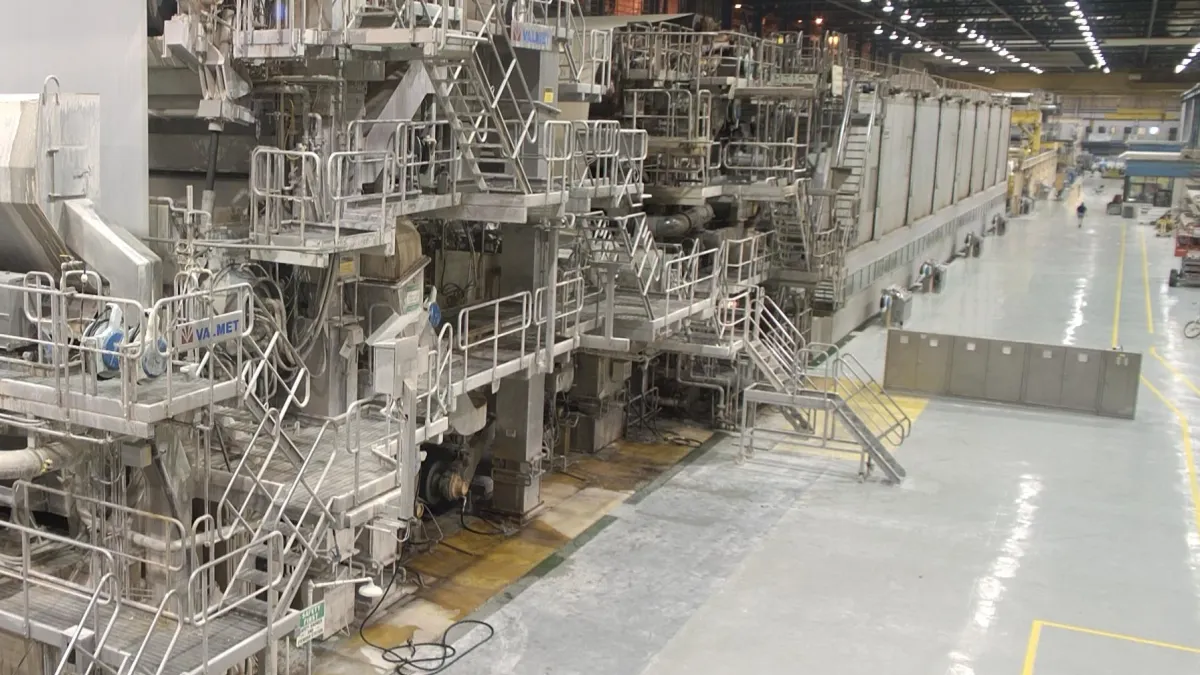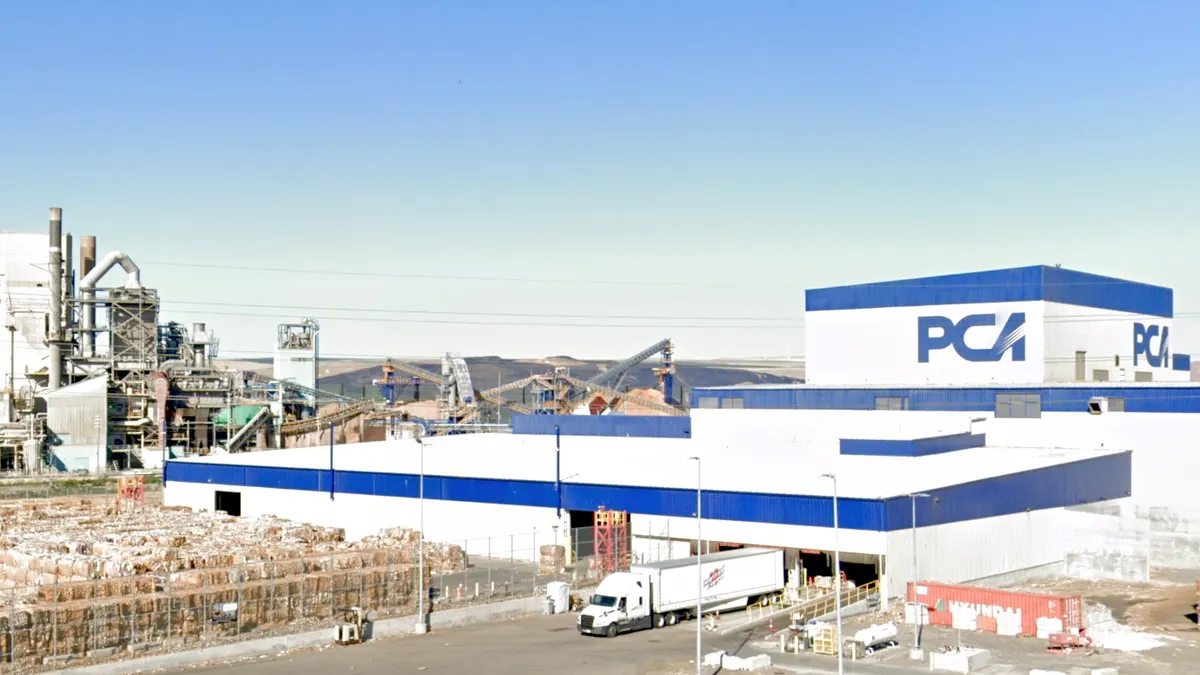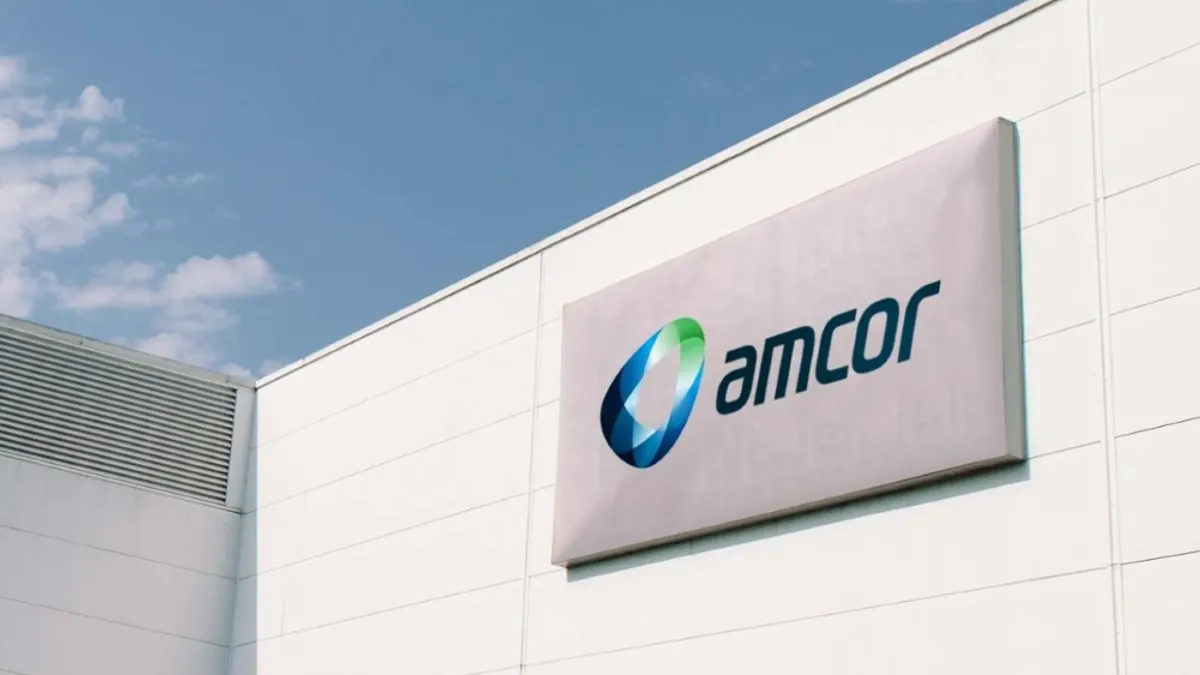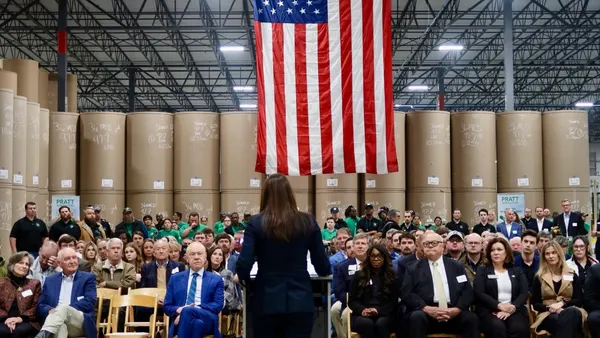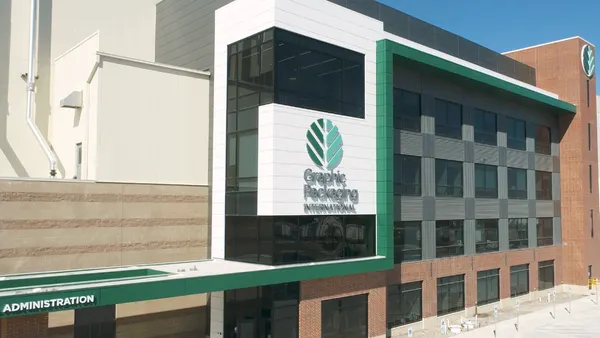Both containerboard production and box shipments fell in the third quarter, while operating rates and inventories ticked up, according to the American Forest & Paper Association’s quarterly data report released Oct. 31. This aligns with trends major producers discussed during Q3 earnings calls, which signal challenging market conditions.
Containerboard production decreased 3.1% compared with Q3 2024, and it was down 3% for the first nine months of 2025 when looking at the same time period last year, AF&PA reported. Third-quarter containerboard production capacity declined 1.7% from Q2. Production capacity has dropped approximately 10% in 2025 to-date, according to multiple analysts. An Oct. 29 analysis from Fastmarkets RISI calls these capacity cuts “historic” and says they’ll “result in the largest annual downward adjustment the sector has seen.”
Domestic new supply in Q3 essentially was flat compared to Q1, which is an improvement from a weak Q2, AF&PA says. Its Q2 report showed production dropped 5% compared with that quarter the prior year.
The capacity declines prompted a Q2 boost to operating rates for all four major containerboard grades, while remaining flat year over year, AF&PA reports. RISI anticipates operating rates will climb further from the approximately 90% average in 2023 and 2024 to reach approximately 95% early next year.
North American paper mills’ Q3 inventories peaked in August at nearly 462,000 short tons, which is up from the Q2 peak in May of 433,000 short tons, according to AF&PA. That put inventories at their highest point in 15 months. However, September brought an 8% decrease, AF&PA says.
The overall 1.4% year-over-year quarterly decline in box shipments is consistent with the trends executives have discussed on recent earnings calls, pointed out Michael Roxland, senior paper and packaging analyst at Truist Securities, in a Nov. 2 memo to investors.
Although most producers cited some improvement in September, quarterly shipments ended the quarter down overall. Packaging Corporation of America’s corrugated shipments per day declined 2.7% year over year in Q3, executives said on their earnings call. Smurfit Westrock’s daily shipments dropped 8.7% year over year, and International Paper’s were down 1.7% year over year. IP executives altered overall shipment expectations in 2025 to be down 1% to 1.5% instead of up by the same amount as previously anticipated.
Boxboard trends
AF&PA also released quarterly boxboard data, showing Q3 production dipped 2% from the previous year. The boxboard operating rate came in at 88.7%, which was down 1.7 points year over year.
As companies are closing facilities and reducing capacity in the containerboard space, the opposite challenge has cropped up in boxboard, says Fastmarkets RISI. “New facilities and expansions are fueling an oversupply, particularly in coated and solid bleached grades.”
SBS saw a 1% year-over-year production increase, uncoated recycled board saw a 3% year-over-year increase, and plate, dish and tray saw a 14% year-over-year increase, according to AF&PA’s Q3 data.
Smurfit Westrock and Clearwater Paper both anticipate certain changes to the grades they focus on, executives detailed on recent earnings calls.
SW is working to transition more customers away from coated recycled board and toward solid bleached sulfate and coated unbleached kraft, where the North American business has “strong positions,” said CEO Tony Smurfit. The company has already transitioned about $100 million worth of business.
Clearwater CEO Arsen Kitch said the company has put on hold its previously announced exploration of adding coated unbleached kraft swing capacity to one of its solid bleached sulfate machines, likely the mill in Cypress Bend, Arkansas.
“While the current industry oversupply is primarily limited to SBS, we believe that it is having an impact on the other two paperboard substrates,” he said.
By year’s end, he believes the oversupply could push down operating rates to the low-80% range unless changes occur. Although “we believe that the industry will rebalance supply with demand in the medium to long term,” barring any short-term supply changes “we believe that it will take more than five years of demand growth to fully absorb the excess capacity that exists today,” he said.
Expectations for Q4 and 2026
Inventories have the potential to drop in Q4, given historical trends. Systemwide inventories typically declined by approximately 15,000 tons during fourth quarters since 2001, Roxland said.
PCA executives said they intend to work down inventories in Q4, and the company is among those — along with IP and SW — that noted plans to take additional economic downtime in Q4.
Fastmarkets RISI projects the year-end result of ongoing containerboard capacity cuts will be an industrywide reduction that is nearly double what occurred following the 2008-2009 financial crisis. Containerboard producers are likely to tee up price increases in 2026 in light of the capacity cuts, according to RISI, which predicts a $50 per ton increase for kraftliner in early 2026 and another $40 per ton in 2027.
The market analysis group also notes that weakness will likely result in total 2025 box shipments being at their lowest since 2015. But similar to other analysts’ discussions in recent weeks, RISI expects the sustained downcycle could soon turn around. The nature and speed of that recovery are up in the air.
“While we do not anticipate a rapid recovery, a gradual upturn is forecast, with average annual shipment growth of 1.6% in 2026-27,” the RISI analysis states. “By 2027, we project box shipments to slightly exceed 2024 figures.”
Editor’s note: This article has been updated with additional context about projected inventories in the fourth quarter.


